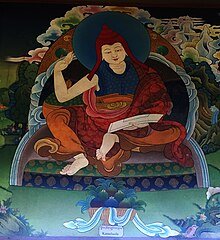A comment to the question “Does anyone use sutras when they meditate?” in the Buddhism and Meditation community on G+ (remember that? Good times.)
Above is Master Kamalashila, Indian Buddhist monk who write like 5 books on the right ways to meditate. See Wikipedia
Meditation means a lot to me. It’s not the end-all-be-all, and it is not for everyone. But I wrote about how a meditation retreat helped get me here.
According to the Indo-Tibetan tradition, there are 3 kinds of meditation, and sutras would definitely be useful for 2 of them. The kind we are most familiar with is jok-gom, or placement meditation. That is focussing single-pointedly on an object; such as the breath, a Buddha image, sensations, etc.
What is really helpful for changing the heart are shar gom and che gom, review, and analytical meditation. In a deep, quiet mind state, you can review a sutra, a list of problems or benefit from sutra, for examples. Analytical meditation is to kick it around: do the steps follow? Does this accord with my own experience?
Using such things as following the breath as a warm-up, contemplation like this is much more powerful than just thinking about stuff.
All 3 could actually happen in one session even: suppose you recall the steps to death awareness. Then you examine them. Out of that may pop-up a powerful personal realization of you own impermanence. Then focus deeply on this realization to “burn it in” to your mind.
Hope this helps.

